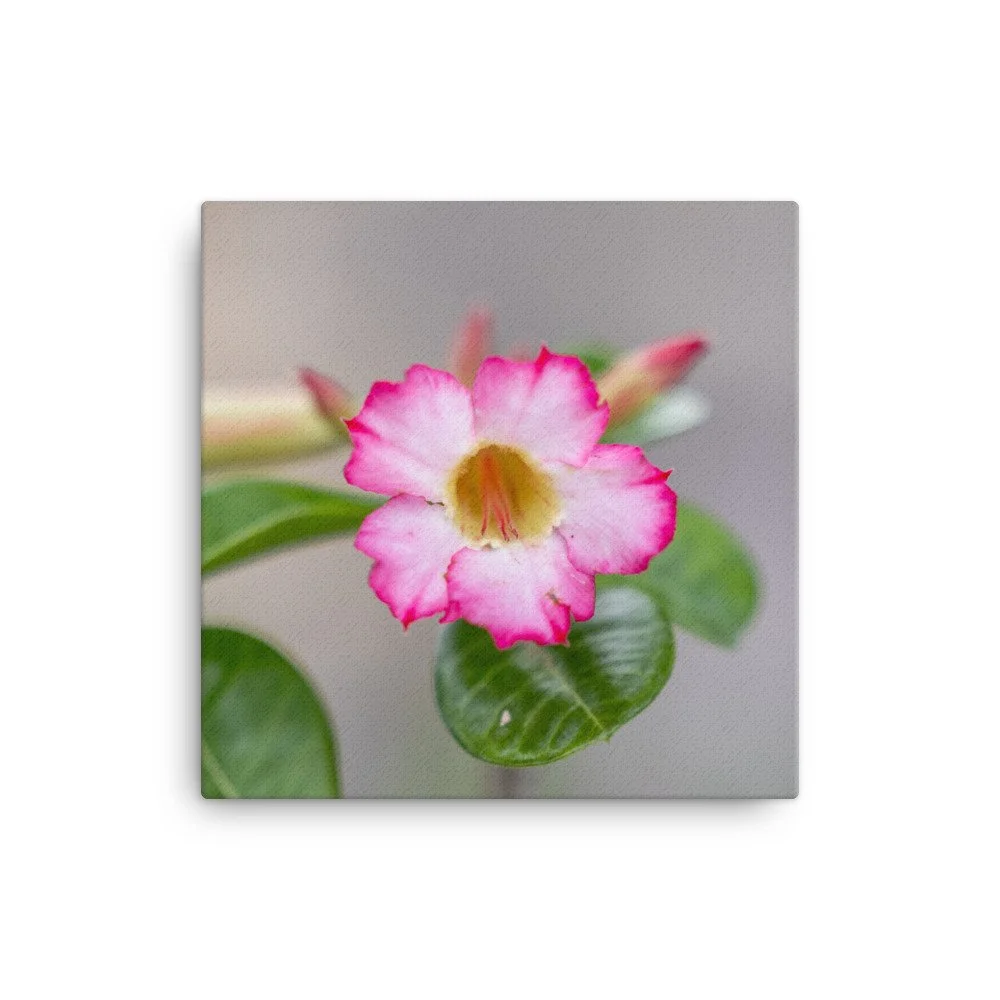 Image 1 of 6
Image 1 of 6

 Image 2 of 6
Image 2 of 6

 Image 3 of 6
Image 3 of 6

 Image 4 of 6
Image 4 of 6

 Image 5 of 6
Image 5 of 6

 Image 6 of 6
Image 6 of 6







Canvas - Desert Rose (Adenium Obesum)
from $40.00
Desert Rose (Adenium obesum) is a captivating succulent boasting a unique blend of resilience and delicate beauty. Native to the arid regions of eastern and southern Africa and the Arabian Peninsula, this plant thrives in harsh environments, storing water in its bulbous caudex 9a swollen base that resembles a miniature elephant's foot). From this plump base rise elegant, twisted branches adorned with glossy, spirally arranged leaves. The true showstopper, however, arrives in the form of the desert rose's blooms. These stunning trumpet-shaped flowers, typically in vibrant shades of pink, red, and white, appear in clusters, painting the stark landscape with their delicate charm. Despite its desert origins, the desert rose can be a rewarding houseplant in colder climates with proper care. It thrives in bright sunlight, well-draining soil, and infrequent watering, mimicking its native conditions. While tolerant of neglect, a bit of pampering with fertilizer during the growing season can coax out even more blooms. Be aware, though, that the desert rose comes with a hidden thorn. All parts of the plant contain toxic latex, making it poisonous if ingested. While not a major concern for responsible pet owners, this characteristic necessitates keeping curious children and furry friends at a safe distance.
Size:
Desert Rose (Adenium obesum) is a captivating succulent boasting a unique blend of resilience and delicate beauty. Native to the arid regions of eastern and southern Africa and the Arabian Peninsula, this plant thrives in harsh environments, storing water in its bulbous caudex 9a swollen base that resembles a miniature elephant's foot). From this plump base rise elegant, twisted branches adorned with glossy, spirally arranged leaves. The true showstopper, however, arrives in the form of the desert rose's blooms. These stunning trumpet-shaped flowers, typically in vibrant shades of pink, red, and white, appear in clusters, painting the stark landscape with their delicate charm. Despite its desert origins, the desert rose can be a rewarding houseplant in colder climates with proper care. It thrives in bright sunlight, well-draining soil, and infrequent watering, mimicking its native conditions. While tolerant of neglect, a bit of pampering with fertilizer during the growing season can coax out even more blooms. Be aware, though, that the desert rose comes with a hidden thorn. All parts of the plant contain toxic latex, making it poisonous if ingested. While not a major concern for responsible pet owners, this characteristic necessitates keeping curious children and furry friends at a safe distance.
